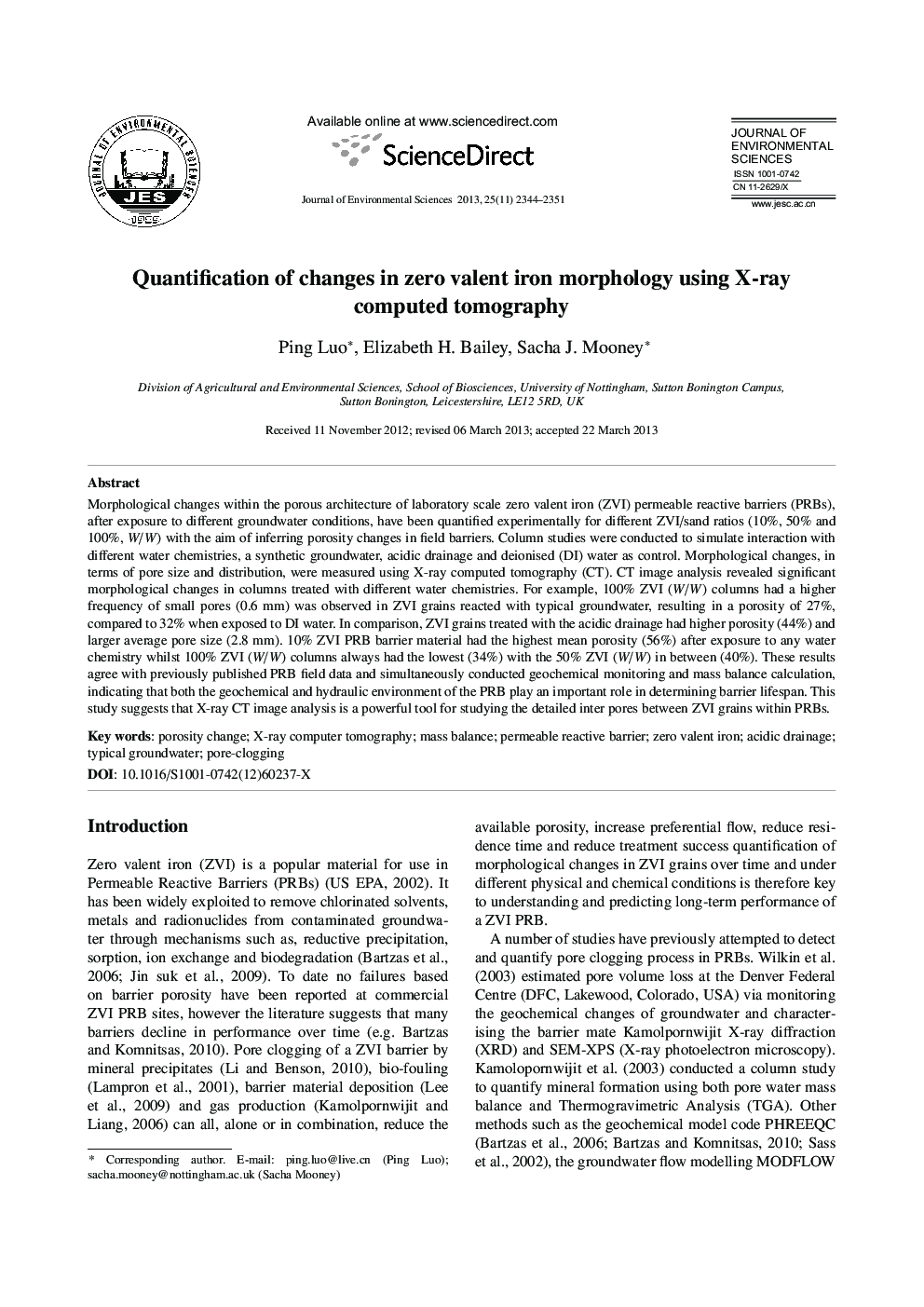| Article ID | Journal | Published Year | Pages | File Type |
|---|---|---|---|---|
| 4454482 | Journal of Environmental Sciences | 2013 | 8 Pages |
Morphological changes within the porous architecture of laboratory scale zero valent iron (ZVI) permeable reactive barriers (PRBs), after exposure to different groundwater conditions, have been quantified experimentally for different ZVI/sand ratios (10%, 50% and 100%, W/W) with the aim of inferring porosity changes in field barriers. Column studies were conducted to simulate interaction with different water chemistries, a synthetic groundwater, acidic drainage and deionised (DI) water as control. Morphological changes, in terms of pore size and distribution, were measured using X-ray computed tomography (CT). CT image analysis revealed significant morphological changes in columns treated with different water chemistries. For example, 100% ZVI (W/W) columns had a higher frequency of small pores (0.6 mm) was observed in ZVI grains reacted with typical groundwater, resulting in a porosity of 27%, compared to 32% when exposed to DI water. In comparison, ZVI grains treated with the acidic drainage had higher porosity (44%) and larger average pore size (2.8 mm). 10% ZVI PRB barrier material had the highest mean porosity (56%) after exposure to any water chemistry whilst 100% ZVI (W/W) columns always had the lowest (34%) with the 50% ZVI (W/W) in between (40%). These results agree with previously published PRB field data and simultaneously conducted geochemical monitoring and mass balance calculation, indicating that both the geochemical and hydraulic environment of the PRB play an important role in determining barrier lifespan. This study suggests that X-ray CT image analysis is a powerful tool for studying the detailed inter pores between ZVI grains within PRBs.
